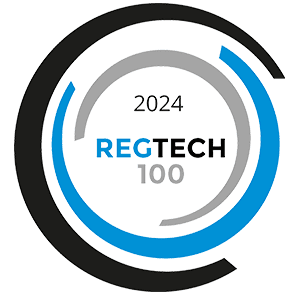Have you selected a new SaaS solution for your compliance team? After all the conversations and reviews and vetting, you’ve signed the deal and are ready to put that new ad review software into action.
There’s one big question left to answer: When?
Setting a date for implementation makes it feel more real like you’re counting down to a rocket’s take-off or something else equally pivotal. And, if you’ve selected the right technology, it will likely have an impressive trajectory as far as improving your business goes.
You don’t want to just grab a date out of thin air. Instead, consider a few different factors that might impact your ability to launch in a well-prepared and timely manner.
1. Training.
Who will need to know how to use the software? Is it an enterprise-wide update and one that will require specialized training sessions for different groups across the organization based on their use cases?
Or is it something that a few specific teams will use, so they’ll need to sit in on a session together and brainstorm? Will everyone be expected to hit the ground running once the technology is in place, or will some training occur after the implementation is completed?
As you evaluate the amount of training time and resources you’ll need, you’ll need to factor those days/dates into your implementation plan.
2. Customer awareness.
Will the new technology affect the way your customers interact with your business? For example, if you’re implementing a new tool for managing investment accounts from a mobile device, you’ll need to let customers know it’s available to them, and you’ll want to spend time in advance creating, editing, and reviewing marketing materials.
If it creates a visible change in the way customers interact with your content, you should also consider messaging them ahead of time and letting them know what to expect.
The same goes for any potential downtime of your systems. Even if your client/customer doesn’t see any changes on their side, they’ll need to know if their accounts or information will be inaccessible while tech changes are happening on the backend.
3. Employee communication.
Any change in process or technology, however small, can mean changes for your employee team. As you set your implementation date, consider how you’ll share information, set expectations, and communicate changes with your internal audiences.
Much of the buy-in you gain from launching a new product or service will come from the way you involve employees in the process, listening to their concerns, and taking their feedback.
4. Process development.
Have you created a process that will work for your team as they adjust to the new technology?
Talk to the people who are currently conducting the process without a designated tool or with one that doesn’t have the functionality of your anticipated new software. Figure out which pain points your technology should solve for them and map out processes that alleviate those pain points.
Decide whether you’ll make big changes and completely upend current processes or whether you’ll make small adjustments and continue to update as your team becomes more familiar with the tool.
5. Data management.
Adding new software into the mix can mean additional data generated, data that will need to be managed and stored. Typically, your vendor will apprise your IT team of tech needs before planning your launch/implementation.
However, you may still need to get some questions clear regarding how the stored information is going to be used, who manages it, and who owns it. (For more detail on this and other questions you should ask, download 10 Questions to Ask When Choosing a RegTech Provider).
What Else Should I Know When Preparing to Launch New Technology?
As you’re launching new technology, you should know it’s not their first day, and it’s not your last day. What do we mean by that?
1. Rely on your vendor.
This may be your first time implementing this particular software or product. The good news: it’s not your vendor’s first time.
Don’t hesitate to ask your vendor questions about best practices or the implementation process for other organizations.
They can be a wealth of information, and they can also connect you with other satisfied customers who are likely using their software in ingenious ways. Many companies even host user conferences to bring people and best practices together.
And, if you see something that could be better, mention that to your vendor as well. They should have a technology/development road map to improve their product and usability.
2. Follow up.
The day of your implementation shouldn’t be the last day you focus on the software. Instead, set regular markers where you’ll follow up with your team/organization and optimize your processes.
For example, one of Red Oak’s clients has placed process managers in charge of overseeing specific areas and workflows. In these roles, they have the opportunity to take ownership of the technology, find places where their workflows could be improved, then iterate on their processes.
When they are expected to be active and provide feedback, they can adjust and ensure the software is working for them. They’ll feel invested and empowered to make the compliance solution work for them, rather than finding ways to work around it.
How long should your implementation countdown last? Many different variables can impact the window of time needed to transition to new technology.
You’ll want to – with the vendor and team input – draw out a timeline that takes these topics and the complexity and scope of the process into consideration. Your vendor should be able to provide some guidelines around how long other clients of your size have taken to prepare for implementation, as well as how long the process itself should take.
Once your timeline is set, be prepared to adapt to circumstances and, of course, to expect a few curveballs. If you have a great team and a great tech vendor behind you, you’ll see your launch through successfully.








